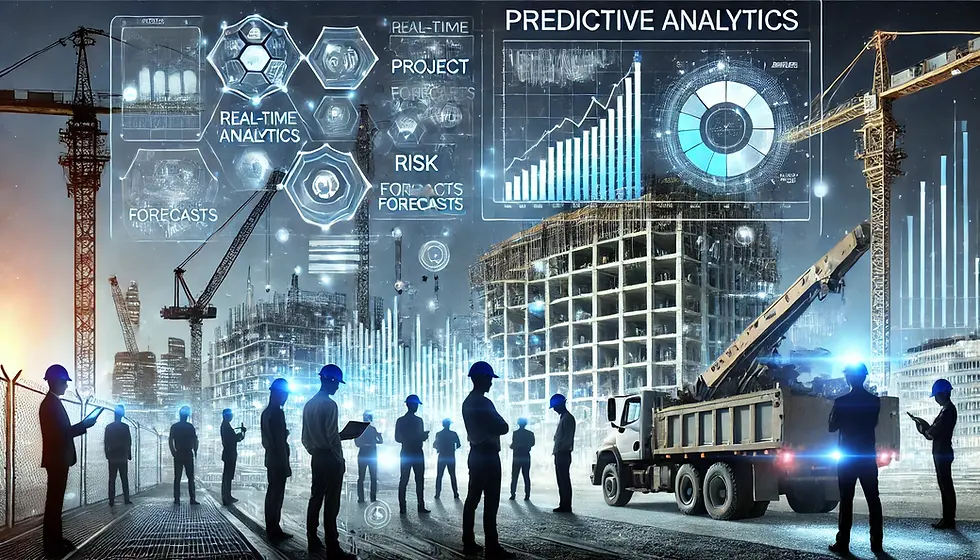Critical Infrastructure Faces Growing Cyber Threats: The Digital Dilemma
- AEC Hires
- Feb 4
- 3 min read
The rapid digitalization of critical infrastructure—encompassing transportation networks, power stations, utilities, dams, and water treatment plants—has ushered in an era of enhanced efficiency and interconnectedness. However, this transformation comes with a double-edged sword: increased cyberattack vulnerability. As our world becomes more dependent on technology, the security of these essential services has never been more crucial.
Recent research highlights a concerning trend: more than half of global critical infrastructure suppliers have encountered attempts to control or shut down their systems. Even more alarming, the average annual rate of cyberattacks on infrastructure is surging at an unprecedented 125 percent. This escalation is not just a statistic; it represents real threats with potentially catastrophic consequences for economies, public safety, and national security.
The Growing Sophistication of Cyber Threats
Cybercriminals and state-sponsored actors are leveraging increasingly sophisticated methods to infiltrate critical systems. From ransomware attacks that cripple municipal utilities to advanced persistent threats (APTs) targeting national power grids, the spectrum of risks is broad and evolving. These attacks are not just about financial gain; many are motivated by political agendas, espionage, or the intent to cause widespread disruption.
For instance, the infamous 2015 cyberattack on Ukraine's power grid left over 230,000 residents without electricity, marking one of the first confirmed instances of a cyberattack causing a blackout. Similarly, the 2021 ransomware attack on Colonial Pipeline in the United States led to fuel shortages across the East Coast, underscoring how vulnerable infrastructure can have immediate and tangible effects on daily life.
Why Critical Infrastructure Is a Prime Target
Critical infrastructure is an attractive target for several reasons. Firstly, these systems are essential for the functioning of society, making them high-value targets. Disrupting power, water, or transportation can cause chaos, undermine public trust, and exert pressure on governments.
Secondly, many of these systems were built decades ago, long before cybersecurity was a consideration. As they are retrofitted with modern digital controls and connected to the internet, they often retain legacy vulnerabilities that can be exploited. Furthermore, the integration of Internet of Things (IoT) devices, while improving operational efficiency, expands the attack surface and introduces new entry points for malicious actors.
Mitigating the Risks: A Call to Action
Addressing the growing cyber threats to critical infrastructure requires a multi-faceted approach. Firstly, organizations must invest in robust cybersecurity frameworks that include continuous monitoring, threat detection, and rapid response capabilities. Regular security audits and vulnerability assessments are essential to identify and address weaknesses before they can be exploited.
Public-private partnerships are also vital. Governments and private sector entities must collaborate to share intelligence, develop best practices, and coordinate responses to cyber incidents. Initiatives such as the Cybersecurity and Infrastructure Security Agency (CISA) in the U.S. are pivotal in facilitating this cooperation.
Moreover, workforce training and awareness are critical components of any cybersecurity strategy. Employees should be educated on recognizing phishing attempts, maintaining strong password protocols, and understanding the importance of cybersecurity in their daily operations.
The Road Ahead
Digitalizing critical infrastructure is an irreversible trend that brings both opportunities and challenges. While the benefits of increased efficiency and connectivity are undeniable, they must be balanced with robust security measures to protect against escalating cyber threats.
In an era where the line between physical and digital security is increasingly blurred, safeguarding our critical infrastructure is not just an IT concern—it is a matter of national security and public safety. As cyber threats continue to evolve, so too must our strategies to defend against them. Proactive, collaborative, and comprehensive approaches will be key to ensuring the resilience of our most vital systems in the face of growing cyber threats.


